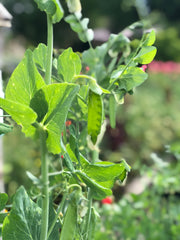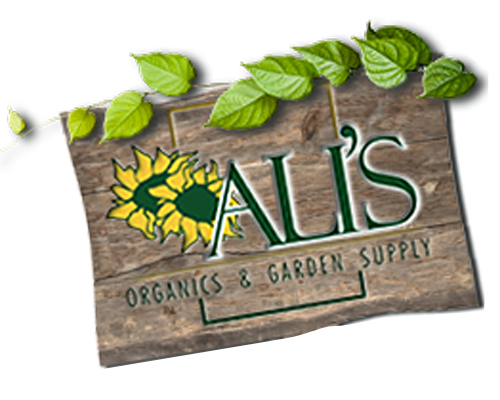Getting The Most Out of Peas ~ Growing and More
Posted February 04, 2020

Peas are a cool-weather crop that is easy to grow and rewarding. Fresh peas are a delight beyond any frozen and especially canned! Tender shoots and pods can be used as well as the peas themselves.
Peas need a sunny location with rich loam soil. Work the soil over to the depth of 1 foot, incorporating well-rotted organic matter (compost). Good drainage is essential, as peas are prone to rotting. If your soil is acidic, add lime at this time.
Peas can be sown from fall to spring. However, in frosty areas, sow your crop so that it isn’t in flower when frosts occur, as these can affect both flowers and pods. The ideal temperature range for flowering and harvesting is 65-80 degrees. Look at the maturity date on pea package to help you figure pod development time. Example: Green Arrow matures in 68 days. Subtract 10 days for beginning flowering tIme ....Give or take a few because of weather conditions. Green Arrow peas should be planted no earlier than 58 days before your first frost in spring. In our zone 8 we plant peas the first week in February for the best crop. When temperatures are over 86 degrees poor pollination, lower yields and rapid development to over-maturity occurs.
We have learned some great tips over several decades that have been fool-proof for planting peas. Peas are best sown directly into dark, damp soil. To do this, water the prepared bed well the day before planting and sow seeds 3/4” deep and 2” apart. Press down firmly with your hand, and don’t water again until shoots emerge within a week to 10 days.
Peas are natural climbers and don’t take up much space, which makes them easy to squeeze into even the smallest of gardens. If you are growing the true climbing varieties, sow them next to a fence or support at least 6’ high and weave their shoots through this as they grow. Be sure to loosely tie them to the support as they grow, because spring winds can pull the plants away just when they are in full flower. The dwarf type only grow to 2’ high, but they crop better if their tendrils can cling to a low trellis, fence or tepee for support. Making a criss-cross fence with bamboo is perfect for dwarf peas and quit lovely in the garden as well.
Peas will fruit best as weather warms in early spring. The main harvest period is just over two to three weeks for shelling peas (English), so sow successive crops at two to three week intervals. Pick peas every few days to keep the plant producing well. The more you pick, the more you encourage further flowering and cropping. When a plant has finished producing, cut it down to the ground, leaving the roots in the soil to boost nitrogen levels.
Peas are legumes and are actually able to improve the soil through nitrogen-fixing nodules on their roots. These nodules draw nitrogen from the air and return it to the soil for use by future crops. Grow leafy green vegetable in the soil after harvesting and removing pea plant (leaving roots), and they will flourish.
Did you know you can harvest pea shoots? The top 2-3” of young seedlings’ growth can be added to salads. Pinching out shoots encourages branching and stimulates the plant to flower and fruit more.
Sugar Snap Peas: These are crunchy, sweet, edible pods that enclose full-size peas. They are available as climbing varieties and dwarf. Sugar Ann is an excellent and favorite snap pea of ours.
Snow Pea: These are best eaten when the immature pods are still young and flat. The entire pea and pod are eaten. Melting Mammoth is one of our favorites.
Shelling Pea or English Pea: These are the traditional peas. The pods are discarded and the pea inside is sweet and juicy. Some pods can be left on the vine to produce dried peas for soups. Green Arrow has a nice large pod filled with delicate plump and delicious peas. Another favorite.



Comments (0 Comments)
There are no comments.
Post Comment